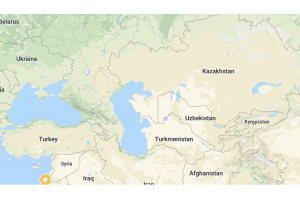Learners’ Preferences for Online Resources, Activities, and Communication Tools: A Comparative Study of Turkey and Kyrgyzstan
 The progresses in technology lead to advances in e-learning as well as lead to increase in number of learners participating in e-learning courses. Richness of online resources, activities, and communication tools presented in online courses can be one of the factors that influence learners’ attendance to e-learning. In this regard, the initial purpose of this study was to identify online resource, activity and communication tool preferences of learners studying in two public universities: one located in Turkey and one located in Kyrgyzstan. At the second stage, comparison of Turkish and Kyrgyz learners’ preferences was carried out to explore differences in two countries. The participants are first-year undergraduate learners enrolled in first-year courses in the online environment. The total number of participants is 370, which involves 185 Turkish learners and 185 Kyrgyz learners. In the context of this study, participants’ submissions to the questionnaire were collected as quantitative data; while participants’ opinions toward online resources, activities, and communication tools were obtained as qualitative data. Thus, the study was designed as a mixed methods research that quantitative and qualitative methods were applied for the data analysis. The results demonstrated that Turkish learners perceive communication tools, online exams, and text-based course notes to be the most useful for e-learning, whereas perceive online group activities and wiki pages as not useful enough. On the other hand, Kyrgyz learners perceive interactive materials, online exams, and social media tools to be the most useful for e-learning, whereas perceive online chats and pages as not useful enough. The participants’ opinions cover important points for the improvement of current online materials. In addition, learners from Turkey and Kyrgyzstan showed both similarities and differences in terms of their preferences toward online resources, activities, and communication tools, which are explained through this paper.
The progresses in technology lead to advances in e-learning as well as lead to increase in number of learners participating in e-learning courses. Richness of online resources, activities, and communication tools presented in online courses can be one of the factors that influence learners’ attendance to e-learning. In this regard, the initial purpose of this study was to identify online resource, activity and communication tool preferences of learners studying in two public universities: one located in Turkey and one located in Kyrgyzstan. At the second stage, comparison of Turkish and Kyrgyz learners’ preferences was carried out to explore differences in two countries. The participants are first-year undergraduate learners enrolled in first-year courses in the online environment. The total number of participants is 370, which involves 185 Turkish learners and 185 Kyrgyz learners. In the context of this study, participants’ submissions to the questionnaire were collected as quantitative data; while participants’ opinions toward online resources, activities, and communication tools were obtained as qualitative data. Thus, the study was designed as a mixed methods research that quantitative and qualitative methods were applied for the data analysis. The results demonstrated that Turkish learners perceive communication tools, online exams, and text-based course notes to be the most useful for e-learning, whereas perceive online group activities and wiki pages as not useful enough. On the other hand, Kyrgyz learners perceive interactive materials, online exams, and social media tools to be the most useful for e-learning, whereas perceive online chats and pages as not useful enough. The participants’ opinions cover important points for the improvement of current online materials. In addition, learners from Turkey and Kyrgyzstan showed both similarities and differences in terms of their preferences toward online resources, activities, and communication tools, which are explained through this paper.







